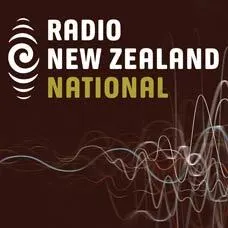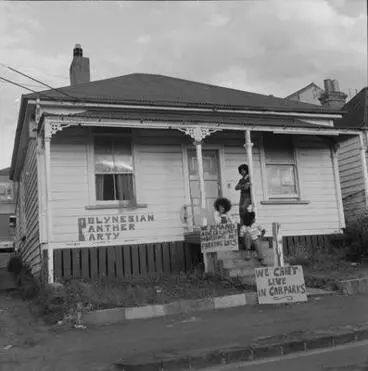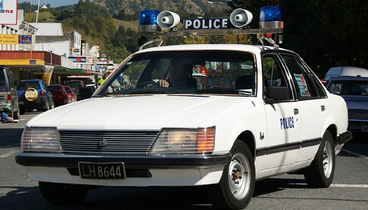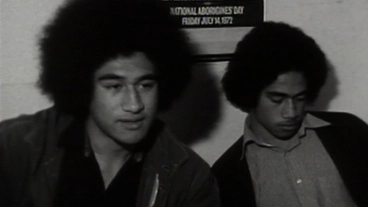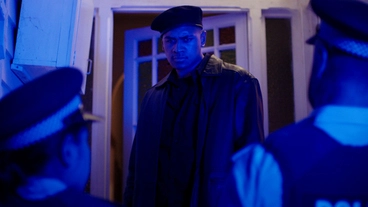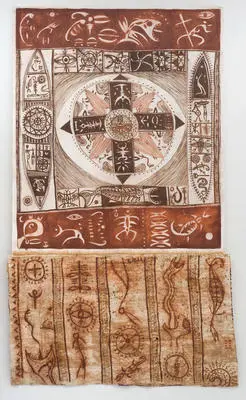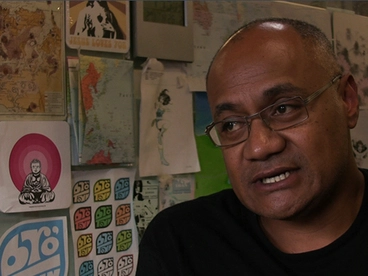Pacific people in Aotearoa New Zealand
A DigitalNZ Story by National Library Services to Schools
Aotearoa New Zealand's Pacific Islands communities have and continue to make huge contributions to our social, cultural and economic wellbeing.
Pacific People in Aotearoa New Zealand
Peoples of the Pacific
Auckland Art Gallery Toi o Tāmaki
WHAKATAUKĪ
E vave taunu’u le malaga pe a tatou alo va’a fa’atasi
Our destiny is within sight when we paddle our canoe together.
Pacific communities have been a part of Aotearoa New Zealand history since the great migration across vast ocean between 1250-1300AD. Later migration waves in the 1970s opened the doors for Pacific communities to settle into Aotearoa New Zealand society, bringing with them their cultures and values to create the communities we have today. Although there are a number of Pacific people in Aotearoa New Zealand from different islands in the Pacific the similarities in beliefs, cultures and values encourage support from each collective and ensures these communities are thriving in our society.
Pacific migrations
Manatū Taonga, the Ministry for Culture and Heritage
Daughters of the Pacific
NZ On Screen
Pacific migrants
Manatū Taonga, the Ministry for Culture and Heritage
BACKGROUND
Over the years many Pacific people have chosen Aotearoa New Zealand as a destination to grow Pacific families and communities. Samoa, the Cook Islands, Tonga, Niue, Fiji, Tokelau, Tuvalu, Kiribati and Rotuma are some of the distinct groups of Pacific communities that make up our diverse population.
Initially, Pacific people often came as students, or visited on temporary work permits. From the 1970s more people settled, forming communities mainly in the Auckland area which still has the biggest population of Pacific people today. Community life meant that they could continue to speak their language and maintain their customs outside of the homelands.
Source: Carl Walrond, 'South Pacific peoples', Te Ara - the Encyclopedia of New Zealand, http://www.TeAra.govt.nz/en/south-pacific-peoples (accessed 19 June 2019)
Aerial view of Mangere Airport
Howick Historical Village
South Auckland
Alexander Turnbull Library
Ponsonby house, 1973
Auckland Libraries
Mazda Motors, Otahuhu, Auckland, New Zealand
The Arts House Trust
MIGRATION TO AOTEROA NEW ZEALAND
The first significant wave of migrants from the Pacific Islands began in the late 1950s. As the New Zealand manufacturing sector expanded, employers turned to the Pacific for unskilled and semi-skilled workers. Migrants from the Cook Islands, Niue and Tokelau arrived as New Zealand citizens. Technically Samoans and Tongans required approval to live and work in New Zealand. However, the government overlooked this requirement during the 1960s.
Source: Paul Spoonley, 'Ethnic and religious intolerance - Intolerance towards Pacific migrants', Te Ara - the Encyclopedia of New Zealand, http://www.TeAra.govt.nz/en/ethnic-and-religious-intolerance/page-4 (accessed 19 June 2019)
Teacher and children in a classroom
Museum of New Zealand Te Papa Tongarewa
Allied Industries, Mangere, Auckland, New Zealand
The Arts House Trust
Pacific Islanders' Church, Mangere, Auckland, New Zealand
The Arts House Trust
Pacific workers at Crown Lynn
Manatū Taonga, the Ministry for Culture and Heritage
Jaybel Industries, Auckland, New Zealand
The Arts House Trust
Pacific woman manual worker
Manatū Taonga, the Ministry for Culture and Heritage
The Dawn Raids
In 1974 the Kirk government clamped down on people overstaying the time allowed by their visas. Pacific Islanders attracted the most attention, with Samoans and Tongans particularly affected, and ‘dawn raids’ by police on the homes of suspected overstayers were introduced in 1974. Immigration policy continued to be tightened under the National government that won power in 1975. Dawn raids ended in the late 1970s after considerable public outcry, including protests by the Polynesian Panthers, a group of New Zealand-born Pacific Islanders influenced by the American Black Panthers movement.
Source: 'Pacific Islands and New Zealand - Immigration and aid', URL: http://www.teara.govt.nz/en/pacific-islands-and-new-zealand/page-2, (Ministry for Culture and Heritage), (published 20-June-2012)
Oscar Kightley - Dawn Raids revisited
Radio New Zealand
Polynesian Panthers and Old House
Auckland War Memorial Museum Tāmaki Paenga Hira
Dawn Raids (New Zealand)
National Library of New Zealand
Polynesian Panthers
NZ On Screen
Bunga
NZ On Screen
Lincoln Street, Ponsonby, Auckland, New Zealand
The Arts House Trust
Pacific arts in New Zealand
The contribution of Pacific people and art to New Zealand creative arts since the 1960s has been hugely significant.In the later 20th century many Pacific Islanders emigrated to New Zealand, bringing their art forms and practices. These became sources of inspiration for New Zealand-born artists of Pacific heritage, who also drew on their experiences of life in New Zealand.The work of artists of Pacific heritage is seen both within the mainstream arts scene and in Pacific cultural settings such as church, independence-day celebrations and traditional ceremonies. A 2012 exhibition of Pacific art at the Auckland Art Gallery also included arts such as weaving, embroidery and tapa cloth.
Source: Kolokesa U. Māhina-Tuai, 'Pacific arts in New Zealand', Te Ara - the Encyclopedia of New Zealand, http://www.TeAra.govt.nz/en/pacific-arts-in-new-zealand (accessed 19 June 2019)
Niuean embroidery, Auckland
Museum of New Zealand Te Papa Tongarewa
Niuean embroidery, Auckland
Museum of New Zealand Te Papa Tongarewa
New forms of Pacific expression
Pacific Islanders with a broader ethnic identity in New Zealand call themselves PIs, Polys, or New Zealand-borns. They have developed new music, fashion, customs and ways of speaking. This distinctive identity is sometimes referred to as Pasifika Aotearoa.
Some young PIs are heavily influenced by Afro-American youth culture in their dress, slang, body language and music, especially hip hop and rhythm and blues. Rastafarianism is another significant influence, notable in young PIs’ dreadlocks and adapted reggae sounds.
The new Pasifika Aotearoa identity has flourished and now includes a proliferating music culture, an eclectic fashion industry, and pan-Pacific churches.
Source: Melenaite Taumoefolau, 'Tongans - Pacific Islands identity', Te Ara - the Encyclopedia of New Zealand, http://www.TeAra.govt.nz/en/tongans/page-4 (accessed 19 June 2019)
Nesian Mystik - For the People
NZ On Screen
21st Sentry Cyber Sister
Museum of New Zealand Te Papa Tongarewa
Che Fu
Manatū Taonga, the Ministry for Culture and Heritage
IVIVIA
The Arts House Trust
Burn My Head In Heaven - Tales from Te Papa episode 72
Museum of New Zealand Te Papa Tongarewa
Black Grace performing
Manatū Taonga, the Ministry for Culture and Heritage
Polynesia migration Aotearoa
Auckland Art Gallery Toi o Tāmaki
Tapa cloth made in New Zealand
Manatū Taonga, the Ministry for Culture and Heritage
QUICK FACTS
- In 1945 there were only 2200 Pacific Islanders living in New Zealand.
- Many Pacific Islanders came to New Zealand in the 1950s and 1960s looking for work opportunities.
- In New Zealand, intolerance towards Pacific migrants increased during the 1970s, particularly after a decline in the economy and the oil crisis of 1973.
- The richness of Pacific cultures in New Zealand can be shown through language. The 2013 Census stated that 1 in 3 Pacific people spoke two or more languages.
- Samoan, Tongan and Cook Island Māori are the most common Pacific languages spoken in New Zealand.
- By 2026 it is estimated there will be 480,000 Pacific peoples living in New Zealand.
- The Auckland Pasifika Festival is a celebration of Pacific Islands cultures and the largest Pasifika festival in the world.
- 69% of Pacific families have children under 18.
- 2 out of 3 Pacific families live in Auckland.
- Pacific people and business contribute $8 billion to New Zealand’s annual Gross Domestic Product (GDP).
- In 2013 almost 73% of Pacific peoples in New Zealand affiliated with one or more Christian religions.
The Pacific influence in Aotearoa
Pate (cricket bat)
Museum of New Zealand Te Papa Tongarewa
Sāmoan Cricket Bats - Tales from Te Papa episode 30
Museum of New Zealand Te Papa Tongarewa
'Ei katu
Auckland War Memorial Museum Tāmaki Paenga Hira
Lap steel guitar
Museum of New Zealand Te Papa Tongarewa
Mu'umu'u (dress)
Museum of New Zealand Te Papa Tongarewa
Pare (hat)
Museum of New Zealand Te Papa Tongarewa
Hair cutting ceremony, Pacific Islanders' Church, Mangere, Auckland, New Zealand
The Arts House Trust
Other resources
Cook Islands tīvaevae — discover the art of tīvaevae (quilting) with Cook Islands women from the Wellington region.
Countering stereotypes — Te Papa and Tongan students have been considering what truly represents them.
Dawn Raids and Polynesian Panthers — Resources supporting inquiry around the Dawn Raids, Polynesian Panthers and Pasifika activism.
NZ On Screen's Pacific Collection celebrates the many islands, cultures, and Pasifika creatives who have enriched Aotearoa, by bringing their stories to the screen.
Pacific cuisine — delicious Pacific inspired dishes.
Pacific level up — an introduction to the Pacific for young Pacific people featuring a series of video presentations by Damon Salesa, and other resources.
Pacific Music Awards winners — the 2019 Pacific Music Awards celebrated the Pacific music industry and its top talents.
Pacific people in NZ — New Zealand’s Pacific peoples are a diverse and dynamic group with the fastest growing young population.
Pacific peoples — explore the stories of peoples of the Pacific and their life in New Zealand.
Pacific peoples in New Zealand — data about the eight main Pacific ethnic groups in New Zealand.
Pacific Sisters — The Pacific Sisters is a collective of Pacific and Māori fashion designers, artists, performers, and musicians that electrified 1990s Auckland.
Pasifika digital legends — these legends are based on traditional Pacific stories and have been retold, in English and Pasifika languages, by students.
Pasifika Festival — Auckland’s award-winning Pasifika Festival is hugely popular.
Pasifika people in New Zealand — how are Pasifika People in New Zealand doing?
Polynesian men — young powerful Polynesian men have become sport's hottest global commodity.
Sa’ili Mālō - Seeking a Better Life— stories in the Samoan language told by early settlers who came to Aotearoa to seek opportunities & a better life for their families.
Samoan tatau (tattoo) — Pacific curator Sean Mallon and Samoan tatau artists Sulu’ape Steve Looney and Tuigamala Andy Tauafiafi talk about the meanings and history of Samoan tattooing.
South Auckland De La Salle College — leading way in Pasifika students' science success.
Tagata Pasifika — TVNZ's flagship Pacific news show, telling the stories of Pacific Islanders and its community.
The Coconet — sharing island love, life and laughter.
The New Zealand Pacific Economy report — what is Pacific New Zealanders’ contributions to the NZ economy?
Tana Umaga
Manatū Taonga, the Ministry for Culture and Heritage
Famous PACIFIC People
Annie Crummer
NZ On Screen
Photographs of Ladi6
Alexander Turnbull Library
Mavis Rivers
Manatū Taonga, the Ministry for Culture and Heritage
Anger Within: Jonah Lomu
NZ On Screen
Albert Wendt, 2012
Manatū Taonga, the Ministry for Culture and Heritage
This story was curated and compiled by Te Puna Mātauranga o Aotearoa | National Library of New Zealand, Services to Schools staff, March 2020.
Under the Fale Photograph 2013:10:27 19:31:13
UC QuakeStudies
School children, Great North Road, Grey Lynn, 1989
Auckland Libraries
Papakura High School students at ASB Polyfest, 2015
Auckland Libraries
Wesley College performance at ASB Polyfest.
Auckland Libraries
Onehunga High School students perfroming at the 2015 ASB Polyfest.
Auckland Libraries
Pacific Islanders arriving in Auckland, 1970
Auckland Libraries












